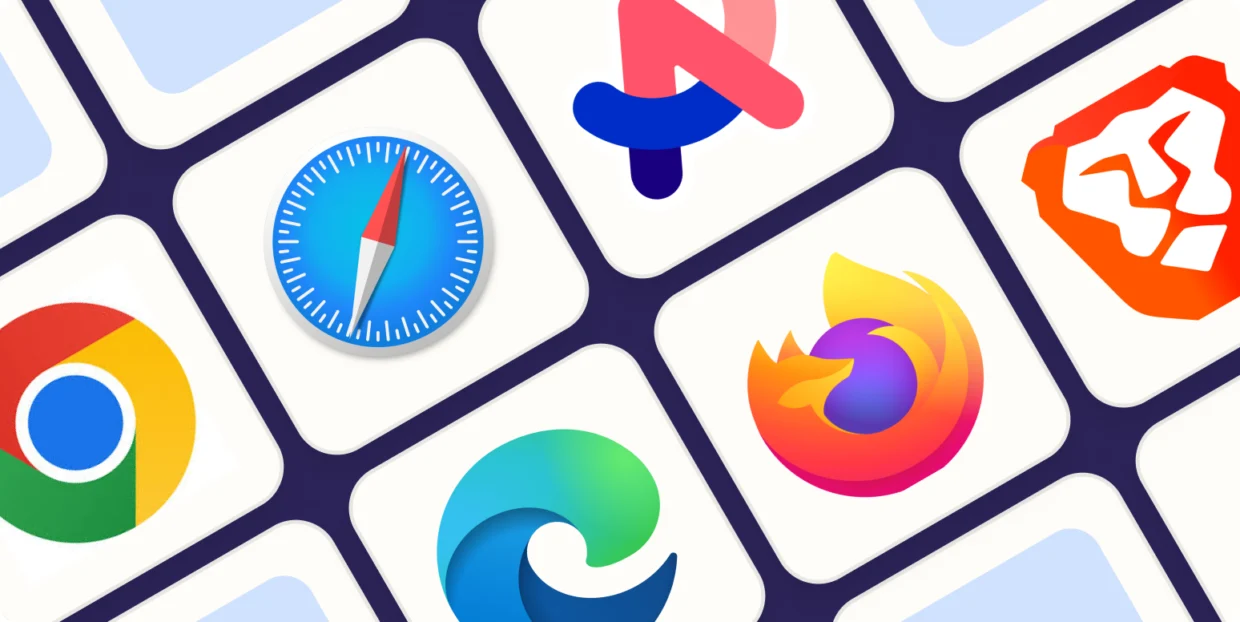Most people don’t realize just how much personal data their browser is quietly hoarding behind the scenes. From saved passwords and browsing history to tracking cookies and location permissions, your browser is basically a diary you never meant to write — and it’s wide open for anyone who gains access to your device.
I’ve gone through all the major browsers—Chrome, Firefox, Edge, and Opera—and dug deep into the privacy settings. Here’s a comprehensive guide on how to wipe your digital footprint from each one, step by step.
🔍 Why Browsers Are a Goldmine of Personal Data
Let’s break it down. Browsers store:
- Search history and URLs
- Saved login credentials
- Auto-fill data (names, addresses, credit cards)
- Cookies that track you across sites
- Cached files and images
- Site-specific permissions (camera, mic, location)
If someone gets into your browser, it’s like handing them your digital passport. Even worse — much of this data is shared with third parties for ad targeting, analytics, and profiling.
So let’s fix that.
🌐 Google Chrome: Privacy First
1. Block Third-Party Cookies
Go to Settings → Privacy and Security → Third-party cookies
👉 Choose “Block third-party cookies.” This stops websites from tracking you across the web.
2. Delete Browsing Data
Under Privacy and Security, click Clear browsing data.
✔ Select:
- Browsing history
- Cookies and site data
- Cached images and files
- (Optional: passwords and auto-fill if you use a password manager)
Choose “All time” as the time range and confirm.
3. Manage Site Permissions
Navigate to Privacy and Security → Site Settings.
Turn off:
- Location access (or set it to “Ask”)
- Camera and microphone (unless absolutely necessary)
- Notifications
4. Control Ad Personalization
Still under Privacy and Security, go to Ads Privacy.
Adjust all options to reduce tracking and stop ad profiling by Google.
🦊 Firefox: Strong Defaults, Even Stronger With Tweaks
1. Enable Enhanced Tracking Protection
Go to Settings → Privacy & Security
Under “Enhanced Tracking Protection,” choose Strict.
This blocks social media trackers, fingerprinting, cryptominers, and third-party cookies.
2. Turn Off Data Collection
Scroll down to “Firefox Data Collection and Use”
Uncheck all boxes — this stops Firefox from collecting telemetry about your usage.
3. Enable Cookie Auto-Cleanup
Under “Cookies and Site Data,” activate:
“Delete cookies and site data when Firefox is closed.”
Useful for clearing out trackers without affecting your session mid-use.
4. Configure Website Permissions
Scroll further down and review permissions for:
- Location
- Camera
- Microphone
- Notifications
Set them to “Ask” or “Block” as appropriate.
Bonus Tip: Use Firefox’s Facebook Container add-on if you’re on social media — it keeps Facebook trackers fenced off.
🟦 Microsoft Edge: Familiar, but Full of Microsoft Tracking
1. Switch to Strict Tracking Prevention
Open Settings → Privacy, search, and services
Under “Tracking prevention,” select Strict for maximum blocking.
2. Disable “Do Not Track” (but read this!)
Edge has a Do Not Track toggle — enable it, but keep in mind many sites simply ignore it. It’s more of a polite request than a wall.
3. Stop Sending Diagnostic Data
Scroll to “Optional diagnostic data”
Turn it off to prevent Microsoft from collecting usage behavior.
4. Kill Personalization and Ads
Under “Personalization & advertising,” turn off everything. This stops tailored ads based on your browsing activity.
5. Clean Up Search History
In the same privacy section, go to Services → Address bar and search
Switch off:
- Suggestions from browsing history
- Related site suggestions
6. Clear Browsing Data
Still in Privacy, search, and services, find “Clear browsing data”
Choose what to delete and for what time range.
Recommended: everything for “All time.”
🟥 Opera: Privacy Features On, But Needs Tuning
Opera looks private thanks to its built-in ad blocker and VPN — but don’t let that fool you. By default, it still sends usage data to its servers. Here’s how to shut that down.
1. Enable Ad and Tracker Blocking
Go to Settings → Privacy Protection
- Enable Block ads
- Enable Block trackers
- Disable Allow acceptable ads
2. Disable Opera Web Services
Still in Settings → Privacy & Security
Scroll to “Opera may use web services to…” and turn off everything. These often include prediction services, error reporting, and other data-sharing features.
3. Block Third-Party Cookies
Go to Cookies and other site data
Set to Block third-party cookies for better privacy.
4. Harden Security Settings
Under Privacy & Security → Security
Make sure to enable:
- Safe Browsing
- Warn about malicious sites
- Fraud protection
5. Clear Browsing Data
Go to Clear browsing data
Select all relevant types of data, then click Clear data.
📌 Note: Opera’s VPN only encrypts browser traffic — not apps or background services. And it’s owned by a Chinese consortium, so take privacy promises with caution.
🧼 Final Cleanup Tips (All Browsers)
Regardless of which browser you use:
- 🔐 Avoid using browsers to save passwords. Use a dedicated password manager like NordPass or ProtonPass.
- 🧽 Clear history and cookies regularly — or automate it.
- 📲 Sync = risk. If you’re syncing data across devices, one compromised account can expose everything.
- ⚠️ Use incognito wisely — it doesn’t hide your activity from your ISP or employer.
⚙️ Advanced Bonus: Browser Extensions to Boost Privacy
Here are a few add-ons I recommend across browsers:
- uBlock Origin – powerful ad/tracker blocker
- Privacy Badger – detects sneaky trackers
- Cookie AutoDelete – removes cookies after you close a tab
- ClearURLs – deletes tracking parameters from URLs
- HTTPS Everywhere – forces secure connections
🛡️ Why I Recommend Using a VPN with Your Browser
Cleaning your browser is one thing — but without a VPN, you’re still leaving footprints online. Your browser might stop cookies and trackers, but your IP address, location, and browsing patterns are still exposed to:
- Your internet provider (ISP)
- Websites you visit
- Ad networks
- Governments (in some countries)
A VPN (Virtual Private Network) encrypts your internet traffic and masks your IP address. That means:
- Websites can’t see where you really are
- Advertisers can’t target you based on location
- Your ISP can’t build a profile of your online behavior
- Public Wi-Fi hotspots become much safer to use
Pro tip:
Even in incognito mode, your real IP is still visible to sites — but a VPN hides it completely. It’s the missing puzzle piece in your browser privacy setup.
For daily browsing, streaming, and even shopping, I personally use VPNs like Surfshark, NordVPN, or CyberGhost. They’re fast, user-friendly, and offer browser extensions if you want even more control.
Best VPN | Offer + Discount | URL |
|---|---|---|
| NordVPN | 77% off + 3 months free | Try NordVPN |
| CyberGhost | 82% off + 2 months free | Try CyberGhost |
| SurfShark | 87% off + 2 months free | Try SurfShark |
Final Thoughts
It doesn’t matter if you’re privacy-obsessed or just want to stop targeted ads from stalking you — cleaning up your browser is one of the easiest and fastest ways to protect your data. No subscription needed, no tech degree required.
Set aside 10–15 minutes, go through your favorite browser’s settings, and give yourself some breathing room from the algorithms.
Your future self will thank you.














